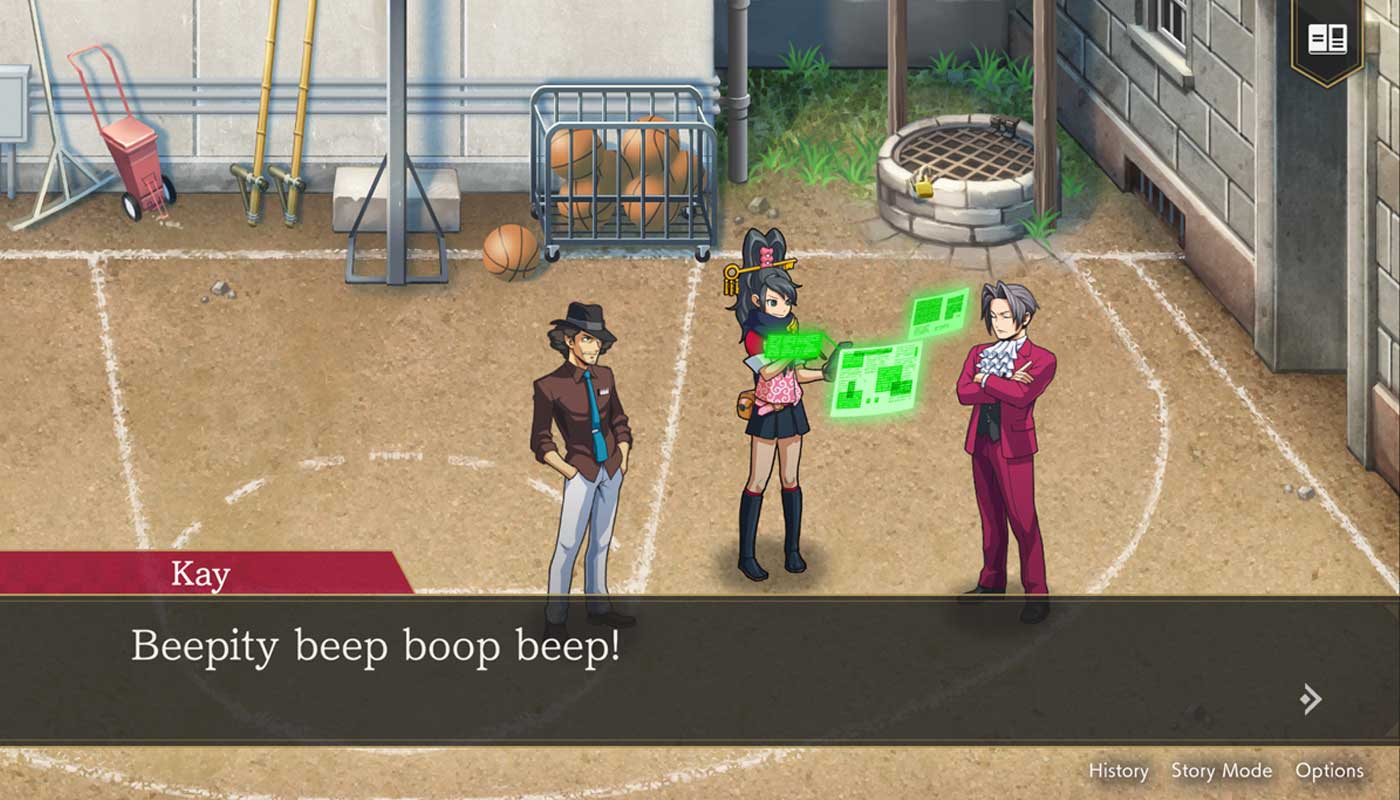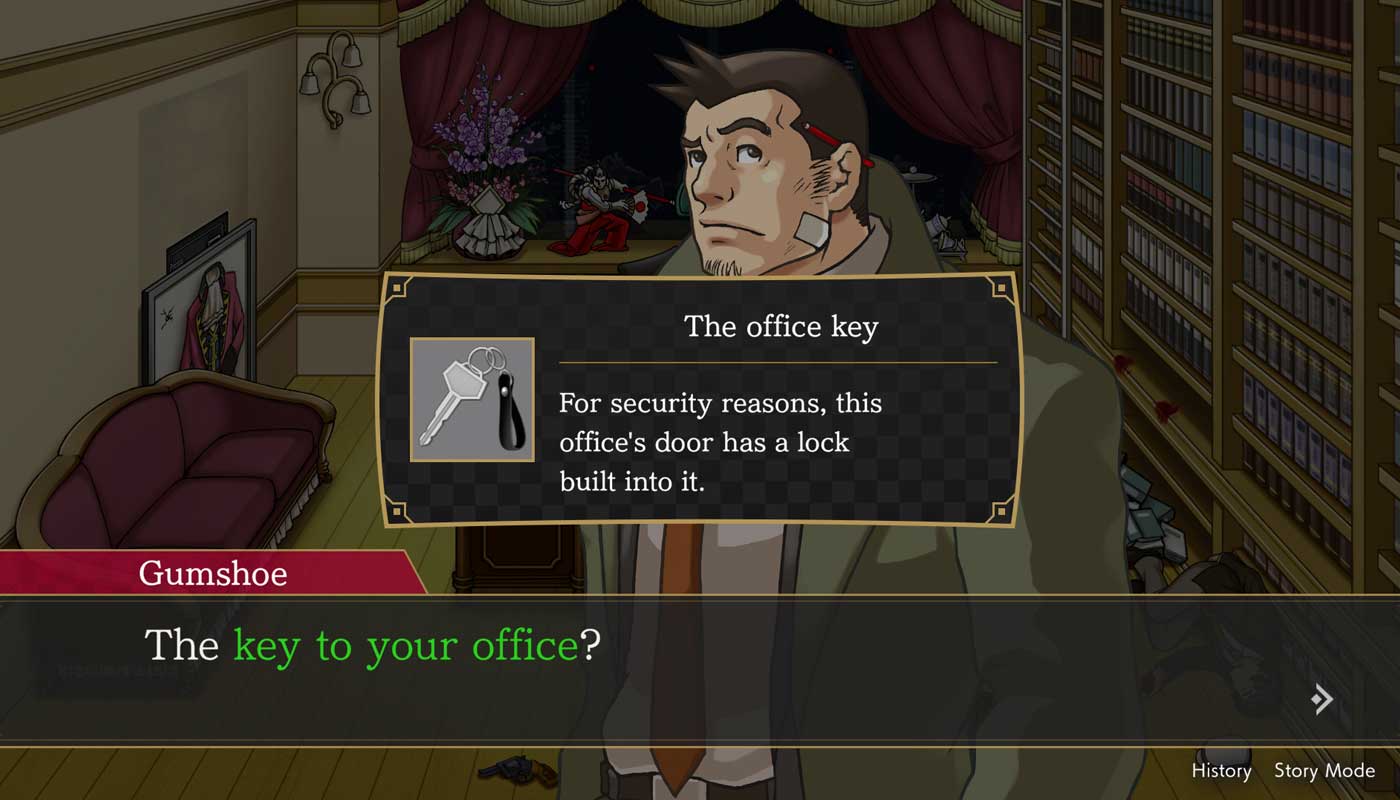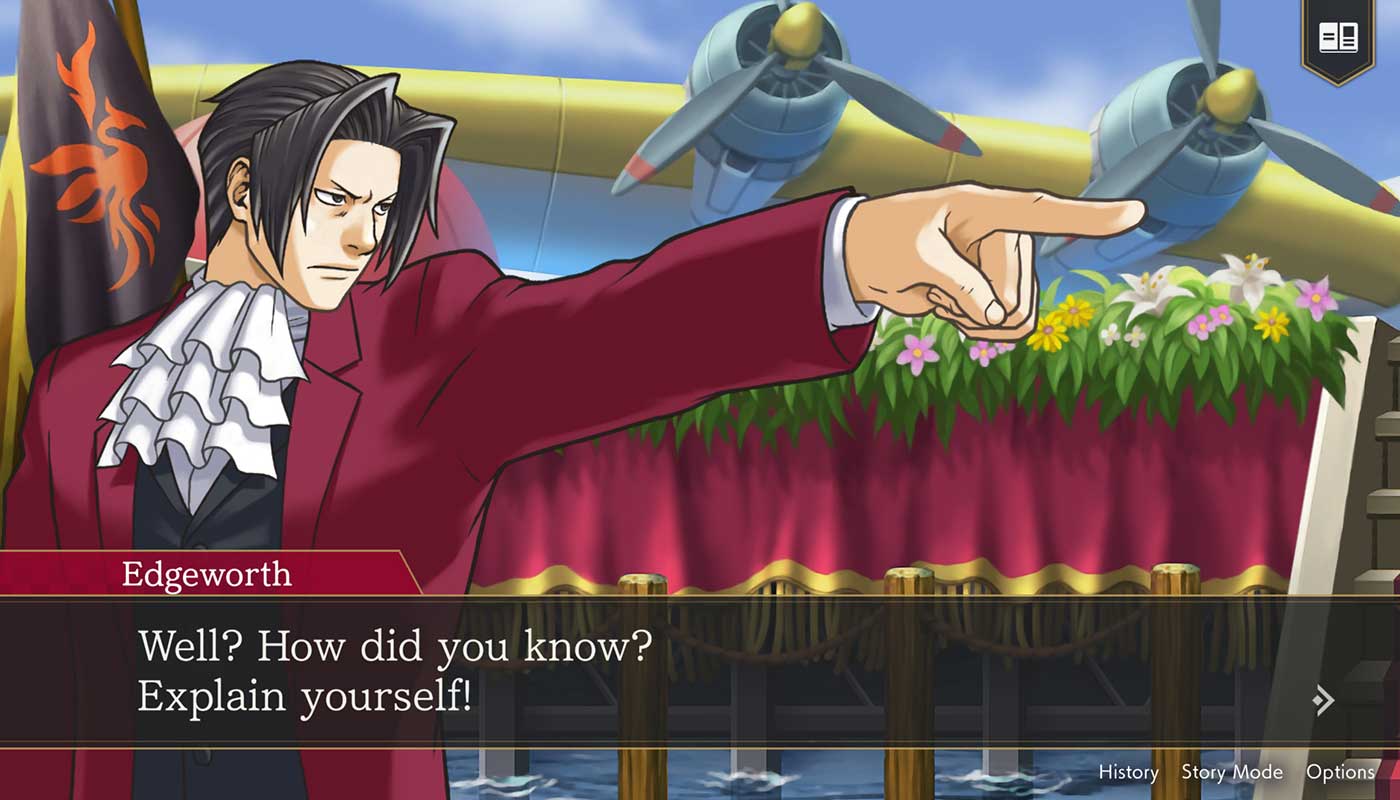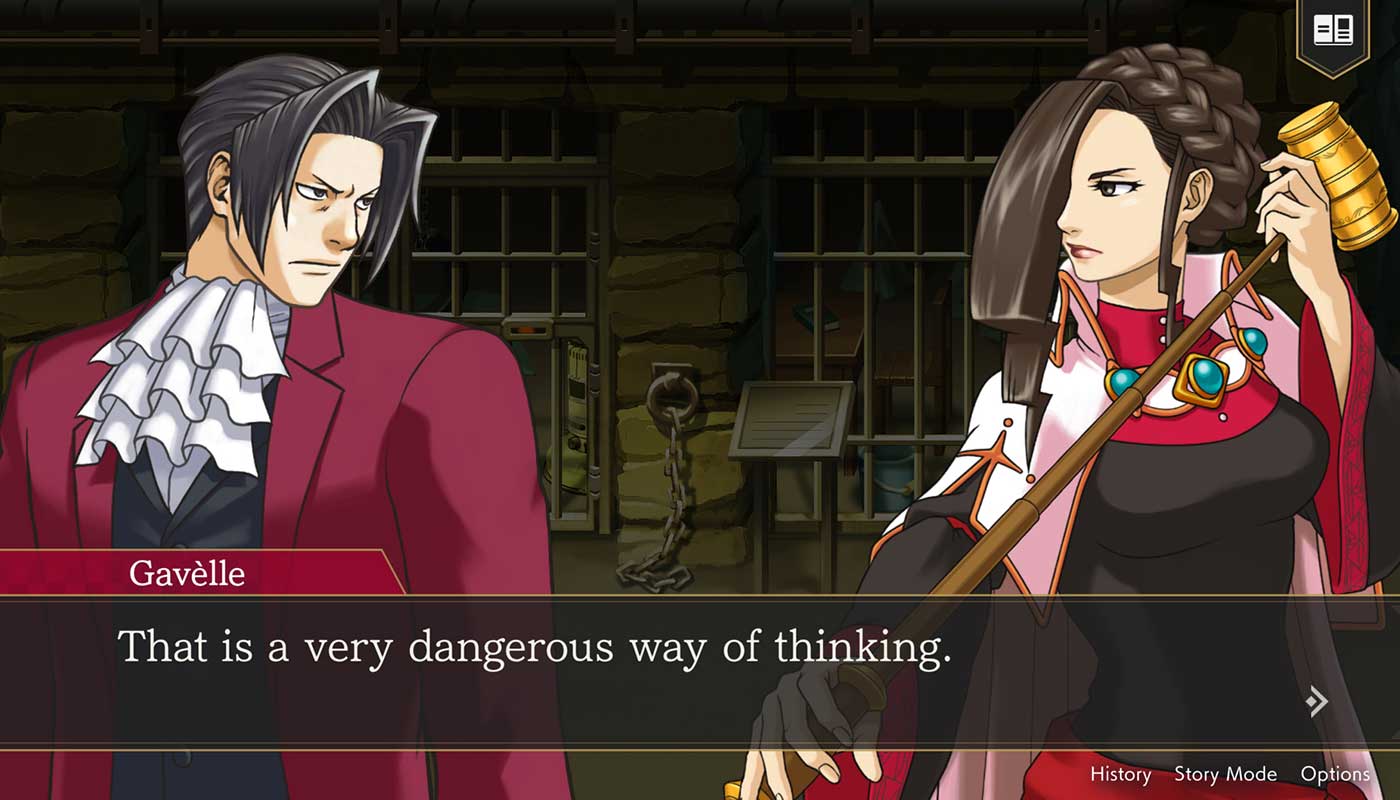It hasn’t been a year yet, but Capcom still seems fit to grace us with yet another Ace Attorney collection. But this is an exciting time for Ace Attorney. It marks the first time that all the games are available on modern platforms, and with Ace Attorney Investigations Collection, the first time that the second game in the very good spin-off series has been available outside of Japan. But while we’ve been arguably bombarded with regular Ace Attorney releases, the quality has yet to falter. The same can be said with Ace Attorney Investigations Collection, which continues Capcom’s trends of honouring the past while hopefully laying the groundwork for the future.
The Investigations games are different to the other Ace Attorney titles. In Investigations, you play Miles Edgeworth, a rival to Phoenix Wright and one of the best prosecutors in the country. While he’s had a more villainous appearance in the earlier games, the Investigations games do a better of fleshing out his character with more depth than previously seen. They’re also set between the large time gap between the third and fourth Ace Attorney games, leaving a lot of opportunity to bring back characters and see how they interact with Edgeworth. However, the major difference is much more significant – the Investigations games rarely enter the court.

While both games in this collection have unique features, they share a similar structure comprised almost entirely of investigating. However, it’s more involved and interactive than the other Ace Attorney games. You directly control Edgeworth, moving him around crime scenes, gathering evidence and interviewing witnesses and potential suspects. It feels more “playable” than just tapping through menus as you would in an Ace Attorney game, though it is a much more linear experience. There’s nothing wrong with that, to be clear, but there is a different flow of progression compared to other Ace Attorney games.
The more involved investigations are complemented by new mechanics, which only improve the experience. Edgeworth’s assistant, Kay Faraday, can use her gadget, Little Thief, to create crime scenes in real life. In the second game, she can view the same crime scene at different points, adding more depth to the investigations. It’s nonsense technology, of course, but you have to go with it. Including Little Thief is a good way to break up the investigation segments, though, like some other aspects of the second game, I wish it was used more throughout.

But besides investigations, the crux of the drama will come from arguments that you’ll have with the people involved in each case. These segments stand in for the courtroom segments, as you’ll use evidence to point out any contradictions in what people tell you. I have always had concerns about whether these moments might be less exciting, given that there are fewer objections flying around, but thankfully, they’re still just as good. Some of the revelations in both the Investigations games, especially in the final case of each, are some of the most shocking in the series.
THE CHEAPEST PRICE: $59 FROM AMAZON
But it wouldn’t be a game about Edgeworth without an extra layer of deduction, and that’s where the Logic system comes in. Designed to perfectly represent Edgeworth’s calm and cool sense of deduction, it lets players piece together information to form conclusions. Said conclusions can then be used as defacto evidence in arguments to make opponents buckle. The Logic system is an excellent addition for a few reasons. For one, it allows Edgeworth (and the player) to keep track of any lingering mysteries discovered. But it also adds an almost endlessly satisfying gameplay loop of connecting information.

The Logic system is built upon in the second game, Prosecutor’s Gambit, with the addition of Mind Chess. When Edgeworth is in a significant argument during a case, the argument is visualised as a game of chess. Similar to cross-examinations from the previous game, you, as a player, must determine the right “move” to make when verbally speaking with an opponent. Sometimes, not making a move (ie. Staying silent) is the better option, too. The timer in these moments makes things especially tense, which might put off some players, but the heightened tension makes them incredibly exciting. Though, like I mentioned before with Little Thief, I’d love to see more of Mind Chess. It can also be too obvious which answers are right.
But while these changes to the formula are obvious, the less obvious question is how these games play. Resoundingly, they are well worth your time. Both games are built around strong stories that grab you from the beginning, standing beside the mainline games with no issue. I adored the first game when it was released for the DS, but replaying it, I can’t deny there are some pacing issues with some of the cases, especially in the final case where the final contraction (while shocking) feels incredibly protracted.

The second game is often talked about as one of the greatest in the series, and, having finally played it, I can see why. The villain is great, the twists are shocking, and the pacing is a considerable step above the original game. Even more so, the overarching narrative is incredibly engaging and easily a step above some mainline games. I’ll obviously not explain much more for the sake of spoilers, but it’s quite frankly criminal that Prosecutor’s Gambit wasn’t officially available to the wide audience until now. It is well worth your time.
Besides the obvious, the collection also includes the typical fare you’d expect from an Ace Attorney collection. A new set of achievements or trophies, a music player, a character viewer, and an art gallery round out an already complete package. The art gallery is particularly cool, allowing you to examine art from the episodes in greater detail. The character viewer feels like a step back from Apollo Justice, lacking the “create your own” mechanics that the collection had. But it’s a nice inclusion that, as always, makes this compilation feel all-encompassing.

Though, easily, the most significant overhaul the games have received is visual. The original game featured a cute pixel-based sprite style, zooming into the better-detailed portraits whenever characters spoke to each other. Ace Attorney Investigations Collection features a new high-definition art style that closely mimics the style of the portraits when in conversations instead. The completely redrawn visuals are great, making the animations look much more lively and consistent with the other Ace Attorney games. That being said, such a dramatic change is bound to upset purists, so the original art style is selectable, too, so both camps are catered for here.
And it’s just as well, too, as, like previous collections, Ace Attorney: Investigations Collections follows in similar footsteps to the previous collections Capcom has been putting out. It’s far and away the best way to experience these games; no deductions needed.




